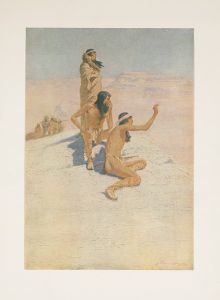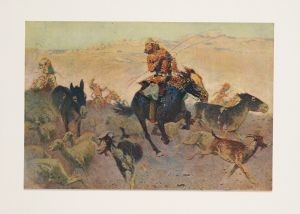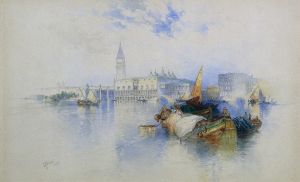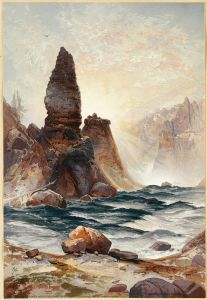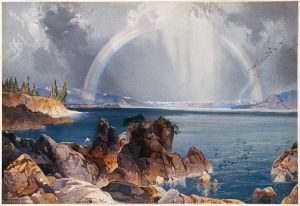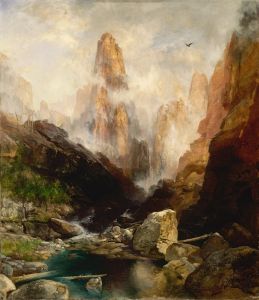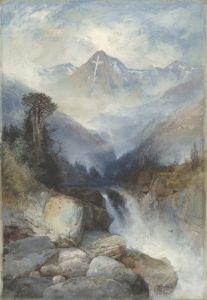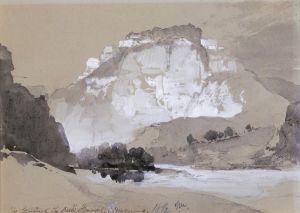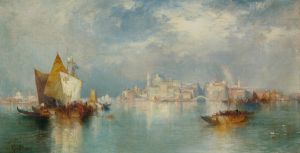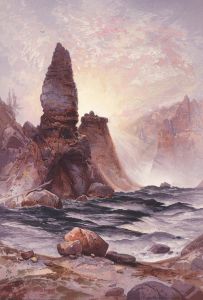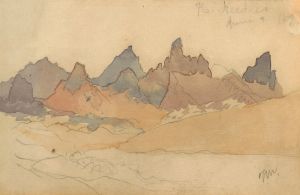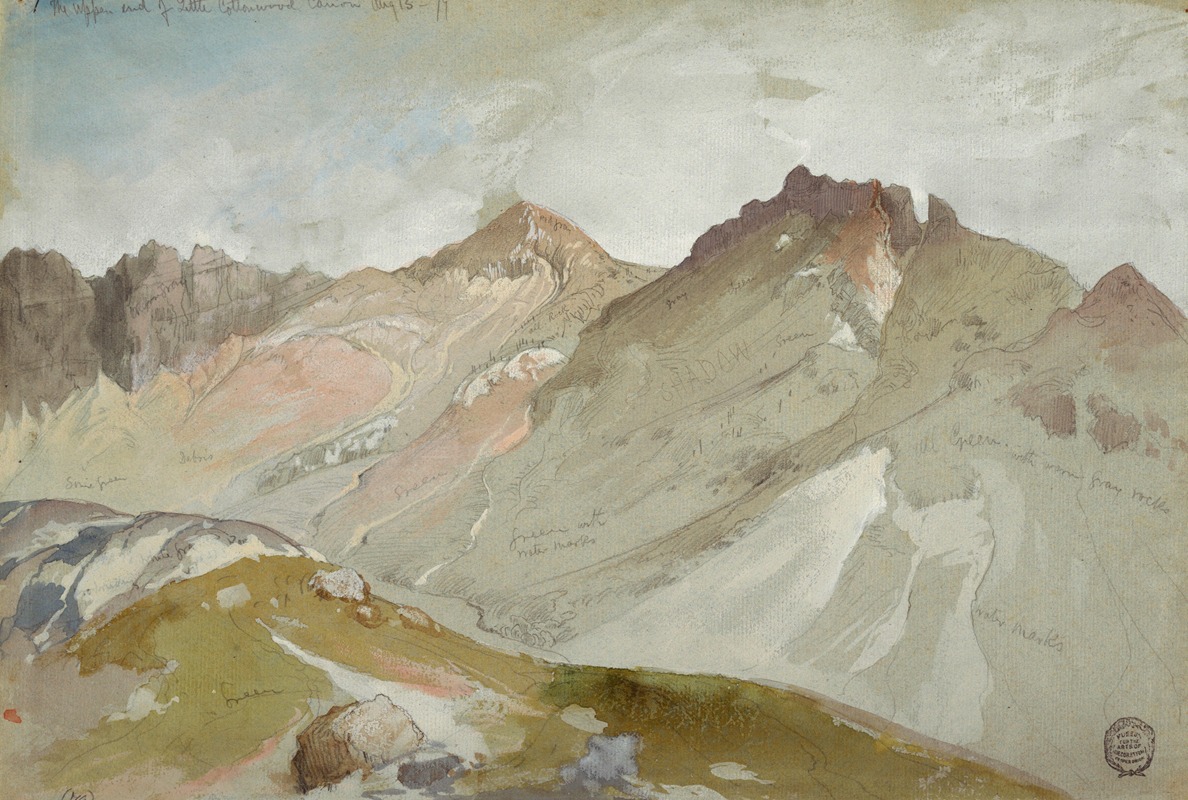
The Upper End of Little Cottonwood Canyon, Wasatch Range, near Ogden, Utah
A hand-painted replica of Thomas Moran’s masterpiece The Upper End of Little Cottonwood Canyon, Wasatch Range, near Ogden, Utah, meticulously crafted by professional artists to capture the true essence of the original. Each piece is created with museum-quality canvas and rare mineral pigments, carefully painted by experienced artists with delicate brushstrokes and rich, layered colors to perfectly recreate the texture of the original artwork. Unlike machine-printed reproductions, this hand-painted version brings the painting to life, infused with the artist’s emotions and skill in every stroke. Whether for personal collection or home decoration, it instantly elevates the artistic atmosphere of any space.
Thomas Moran's painting "The Upper End of Little Cottonwood Canyon, Wasatch Range, near Ogden, Utah" is a notable work by the American landscape artist renowned for his depictions of the American West. Moran, born in 1837 in Bolton, England, immigrated to the United States with his family in 1844. He became one of the most prominent painters of the Hudson River School, a mid-19th century American art movement embodied by a group of landscape painters whose aesthetic vision was influenced by romanticism.
Moran's work is often associated with the exploration and documentation of the American frontier, particularly the western United States. His paintings played a significant role in the establishment of the National Parks system, as his vivid and dramatic portrayals of landscapes such as Yellowstone and the Grand Canyon captured the public's imagination and highlighted the natural beauty of these regions.
"The Upper End of Little Cottonwood Canyon, Wasatch Range, near Ogden, Utah" is an example of Moran's ability to capture the grandeur and majesty of the American landscape. Little Cottonwood Canyon is located in the Wasatch Range, a mountain range that stretches across Utah and is part of the larger Rocky Mountains. This area is known for its stunning natural beauty, characterized by rugged mountains, dense forests, and clear streams.
Moran's painting likely captures the essence of this landscape, emphasizing the dramatic interplay of light and shadow, the texture of the rocky terrain, and the lushness of the surrounding vegetation. His use of color and composition would have been intended to evoke a sense of awe and wonder, inviting viewers to appreciate the sublime beauty of the natural world.
Throughout his career, Moran was known for his meticulous attention to detail and his ability to convey the vastness and scale of the landscapes he depicted. His works often featured sweeping vistas and towering peaks, rendered with a keen eye for the atmospheric effects of light and weather. This approach not only highlighted the physical beauty of the landscapes but also imbued them with a sense of timelessness and grandeur.
Moran's paintings were instrumental in shaping the perception of the American West during a time of rapid expansion and exploration. His works were widely exhibited and reproduced, reaching audiences across the United States and beyond. They contributed to a growing appreciation for the natural wonders of the West and underscored the importance of preserving these landscapes for future generations.
While specific details about "The Upper End of Little Cottonwood Canyon, Wasatch Range, near Ogden, Utah" may not be extensively documented, it can be appreciated within the broader context of Moran's oeuvre and his impact on American art and conservation. His legacy endures through his paintings, which continue to inspire and captivate viewers with their breathtaking depictions of the American wilderness.





